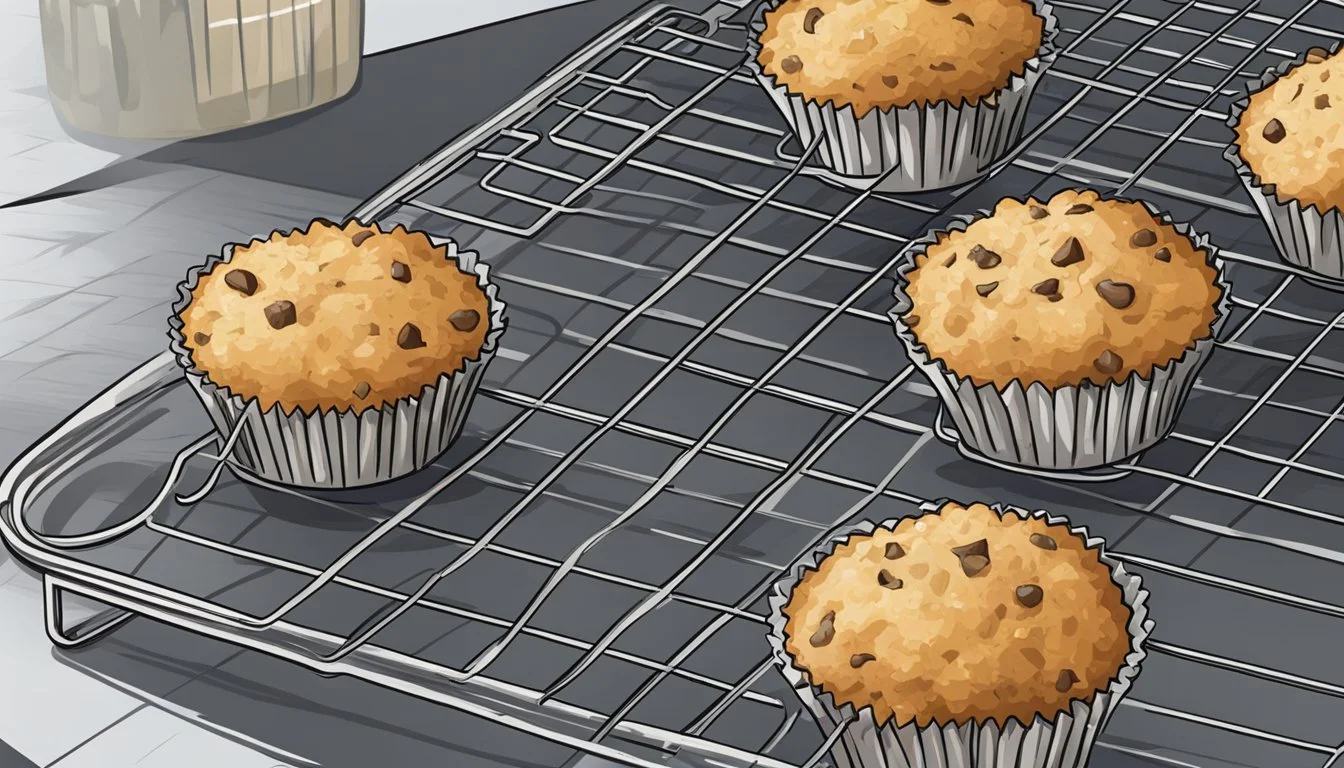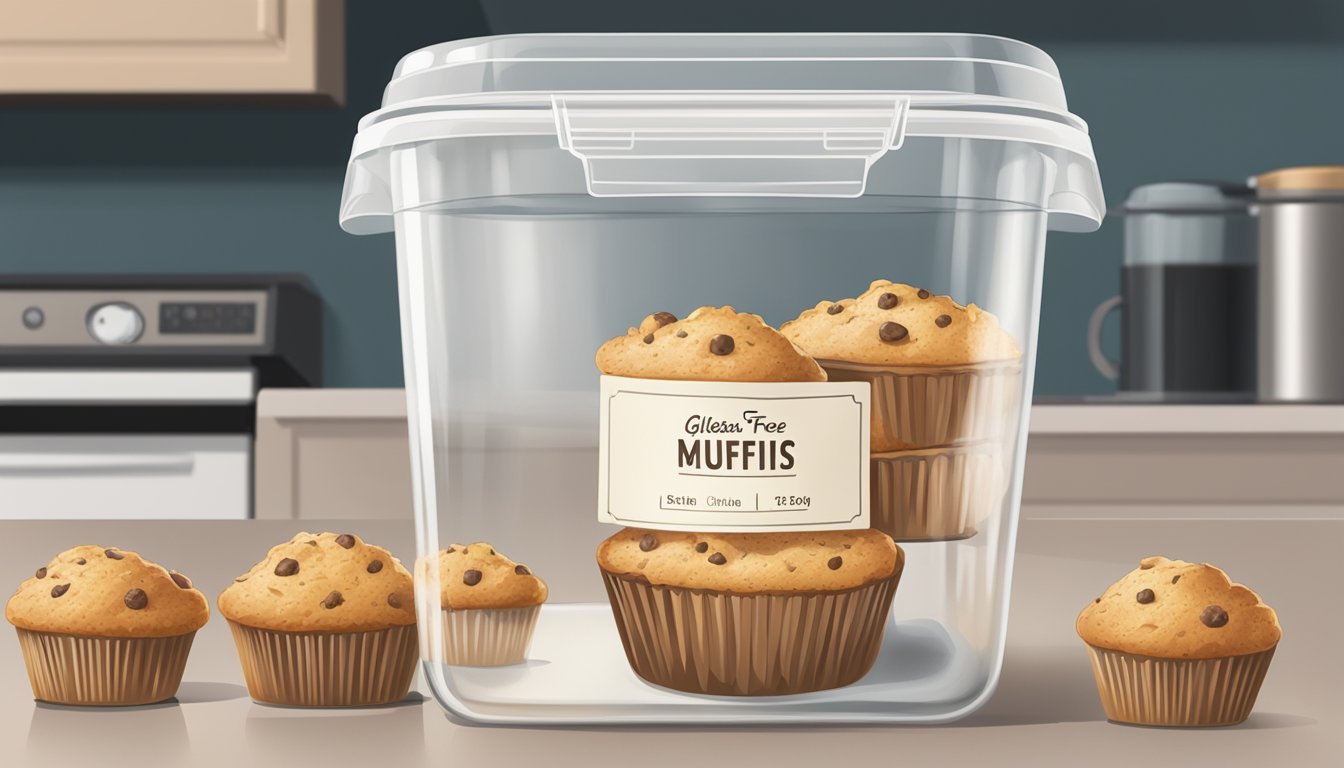How Long Do Gluten-Free Muffins Last?
Best Storage Tips and Shelf Life
Gluten-free muffins, an increasingly popular bakery item, offer a delicious solution for those with gluten sensitivities. When properly stored, gluten-free muffins can last up to three days at room temperature and up to a week if refrigerated. Their shelf life can extend even further to about two months when frozen. This makes them a versatile grab-and-go treat that can be prepared in advance.
Given the absence of gluten, these muffins tend to dry out quicker than their traditional counterparts. To maintain their moist texture, it's essential to store them correctly. Wrapping each muffin in plastic wrap and placing them in an airtight container can help lock in moisture and keep them fresh for a longer period.
Different gluten-free muffin recipes may result in varying textures and shelf lives. For instance, muffins made with almond flour might retain moisture better than those made with rice flour. Understanding these nuances can help you maximize the freshness and enjoyment of your gluten-free muffins.
The Basics of Gluten-Free Muffins
Gluten-free muffins rely on a mix of specific ingredients and equipment to achieve the right texture and flavor. Key points include understanding the unique baking components and having the right tools on hand.
Understanding Gluten-Free Baking Ingredients
Gluten-free flour is the foundation of a gluten-free muffin recipe. These flours can come from sources like rice, almond, or coconut. Xanthan gum is often added to provide elasticity and structure, mimicking the properties of gluten.
Leavening agents such as baking powder and baking soda are essential to help the muffins rise. Adjustments in quantities might be needed compared to regular recipes. Sugar, either granulated or brown, helps to add sweetness and moisture, while buttermilk or other dairy-free alternatives can be used for extra tenderness.
Essential Equipment for Baking Gluten-Free Muffins
A good muffin pan is critical, with paper liners or good-quality non-stick coating to prevent sticking. Mixing bowls in various sizes are needed to combine dry and wet ingredients separately. An electric mixer can also be helpful in achieving a consistent batter.
Additional tools include measuring cups and spoons for accuracy, and a whisk or a spatula to ensure all ingredients are thoroughly mixed. Cooling racks are important to allow the muffins to cool evenly after baking. Each piece of equipment helps in creating the perfect gluten-free muffin.
Preparing Your Gluten-Free Muffin Batter
Creating the perfect gluten-free muffin batter involves carefully combining dry and wet ingredients and adding in mix-ins to customize your muffins to your liking. Each step plays a crucial role in achieving the right texture and flavor.
Combining Dry and Wet Ingredients
Mixing the dry and wet ingredients properly is key to achieving gluten-free muffin success.
Start with the dry ingredients: typically, a combination of gluten-free flour, baking powder, baking soda, salt, and sugar. Some recipes may also call for tapioca starch or xanthan gum to help with texture. Combine these ingredients in a large bowl, ensuring they are well mixed.
For the wet ingredients, common choices include, but are not limited to, eggs, milk, oil, butter, and pure vanilla extract. Make sure to melt butter and let it cool to room temperature before adding it to the mix. Whisk the eggs and other wet components together until smooth.
Once both sets of ingredients are ready, pour the wet ingredients into the dry mixture. Stir gently and briefly to combine. Be cautious not to overmix; the batter should be smooth but some lumps are okay. Overmixing can lead to denser muffins.
Customizing Your Muffin Batter with Mix-Ins
Adding mix-ins can elevate the flavor and texture of your gluten-free muffins.
Consider mix-ins like fruits, nuts, chocolate chips, or spices. For fruit, small, diced pieces of apples, berries, or bananas work well. If using nuts, chopped options like walnuts or almonds add a delightful crunch.
When adding these, fold them carefully into the batter. Use a spatula to distribute the mix-ins evenly without overworking the batter. The goal is to incorporate the extras without disrupting the batter's balance.
Customizing muffins with different flavors and textures can make each batch unique, providing variety while keeping the process simple and enjoyable.
Baking and Testing Gluten-Free Muffins
Correctly baking gluten-free muffins and testing their doneness are crucial steps to ensure they come out perfect. Let's explore the best practices for preheating your oven and determining the ideal baking time.
How to Preheat Your Oven Correctly
Preheating your oven is a critical step in baking gluten-free muffins. Consistent temperature helps achieve the best texture and rise. Different recipes call for varying oven temperatures. Often, preheating to 375°F or 425°F works well.
To preheat, ensure your oven reaches the specified temperature before placing your muffin tin inside. Use muffin cups or paper baking cups in your muffin pan for easy removal and even baking. An oven thermometer can help verify your oven's accuracy.
Preheating usually takes about 15 minutes. This ensures the batter receives immediate, consistent heat. This initial heat shock helps the muffins rise properly, offering the fluffy texture that is so desirable in gluten-free baking.
Determining the Perfect Baking Time
Baking time for gluten-free muffins varies, but it's often between 15 to 25 minutes. Set your timer for the minimum time to avoid overbaking. Convection ovens generally bake faster than conventional ovens, so adjust accordingly.
A crucial test for doneness is the toothpick test. Insert a toothpick into the center of a muffin. If it comes out clean or with a few crumbs, your muffins are done. If it’s wet with batter, bake for a few more minutes and test again.
Monitor the texture and taste closely. Overbaking can dry out muffins, while underbaking leaves them gummy. Achieving a golden-brown color on top is a good indicator. Remember to store your muffins properly to maintain their freshness.
This combination of careful preheating and precise timing ensures delicious, well-baked gluten-free muffins every time.
Proper Storage Methods for Gluten-Free Muffins
To maximize the shelf life of gluten-free muffins and maintain their quality, it's essential to store them using appropriate methods. These include choosing the right environment for short-term and long-term storage, and correctly thawing frozen muffins when needed.
Countertop vs. Refrigerator Storage
When storing gluten-free muffins on the countertop, using an airtight container is crucial. Placing a sheet of paper towel under and over the muffins within the container can help absorb any excess moisture, keeping the muffins from becoming soggy. Stored this way, gluten-free muffins typically last 2-3 days.
Refrigerator storage extends the muffins' freshness a bit longer. Again, an airtight container is key to prevent the muffins from drying out. Gluten-free muffins stored in the refrigerator can last up to a week, though the texture might change slightly.
Freezing and Thawing Techniques
Freezing gluten-free muffins is ideal for longer storage and preserving their quality. Once the muffins have cooled completely, place them in freezer bags or wrap them individually in plastic wrap before placing them in an airtight container. This double layer of protection helps prevent freezer burn.
To thaw, remove muffins from the freezer and let them sit at room temperature for a few hours. For a quicker option, microwaving them for 20-30 seconds on a low setting works well. Proper freezing and thawing techniques ensure that gluten-free muffins remain tasty and fresh, extending their shelf life significantly.
Nutritional Profile of Gluten-Free Muffins
Gluten-free muffins vary in nutritional content, but they typically contain calories, protein, carbohydrates, fat, fiber, and sugar. Understanding these components helps in evaluating their healthiness.
How to Make Healthier Gluten-Free Muffins
Ingredients and Substitutions:
Using wholesome ingredients can significantly improve the nutritional profile. For example, substitute refined sugar with natural sweeteners like honey or maple syrup. Switch out standard gluten-free flour blends with almond flour or oat flour for added fiber and protein.
Fat and Protein Content:
Lowering the fat content can be achieved by using applesauce or yogurt instead of butter. For an extra protein boost, consider adding ingredients like chia seeds or nuts.
Carbohydrates and Sugars:
Monitor carbohydrate levels by choosing ingredients such as fruits and vegetables that provide natural sweetness and fiber. Limit added sugars to keep the muffins healthy and suitable for various dietary needs.
Gluten-Free Muffin Variations and Substitutions
Gluten-free muffins can be adapted to suit various dietary preferences and packed with different flavors and textures. Whether needing dairy-free and egg-free options or exciting mix-ins, there's a perfect gluten-free muffin variation for everyone.
Dairy and Egg-Free Options
For dairy-free muffins, replacing regular milk with almond milk or another plant-based milk like coconut or soy milk works well. Instead of butter, using coconut oil or vegan butter is effective.
Egg-free adaptations are possible with substitutes like mashed bananas, applesauce, or commercial egg replacers. These substitutions maintain moisture and binding in the muffins.
A combination of coconut oil, pure maple syrup, and mashed bananas creates a creamy, flavorful base. This approach ensures the final product remains tender and flavorful without the need for dairy or eggs.
Incorporating Different Flavors and Textures
Incorporating various flavors and textures elevates gluten-free muffins. Common mix-ins like blueberries, chocolate chips, and nuts can transform basic recipes. For fruity options, adding fresh or frozen blueberries, raspberries, or strawberries provides bursts of flavor and texture.
Gluten-free banana muffins benefit from ripe bananas and a touch of pure maple syrup for sweetness. For a more decadent option, chocolate chips or nuts can be integrated into the batter.
Experimenting with ingredients such as almond flour or different spices like cinnamon also adds depth and complexity to gluten-free muffins. With these variations, gluten-free baking becomes both accessible and enjoyable.







